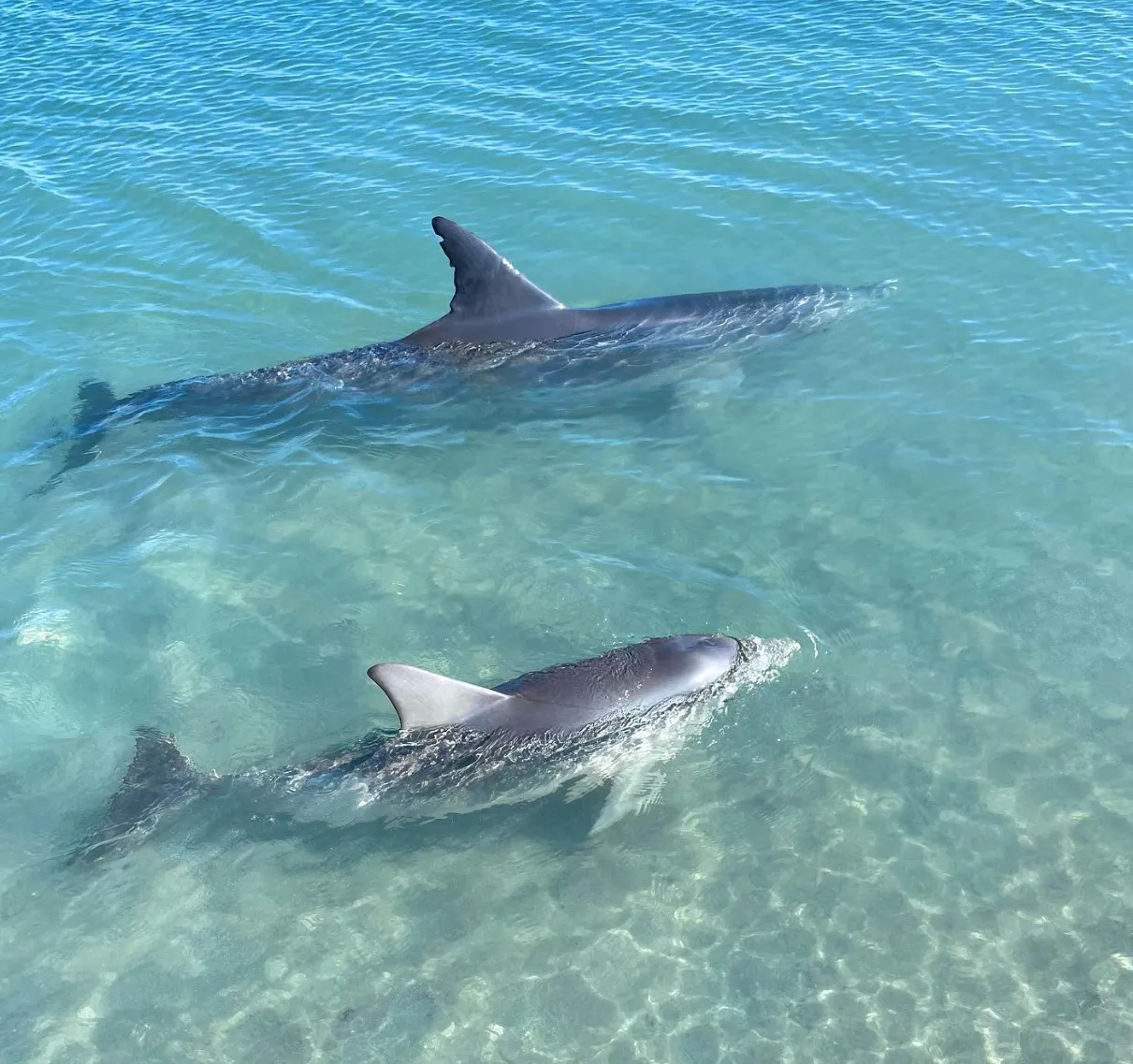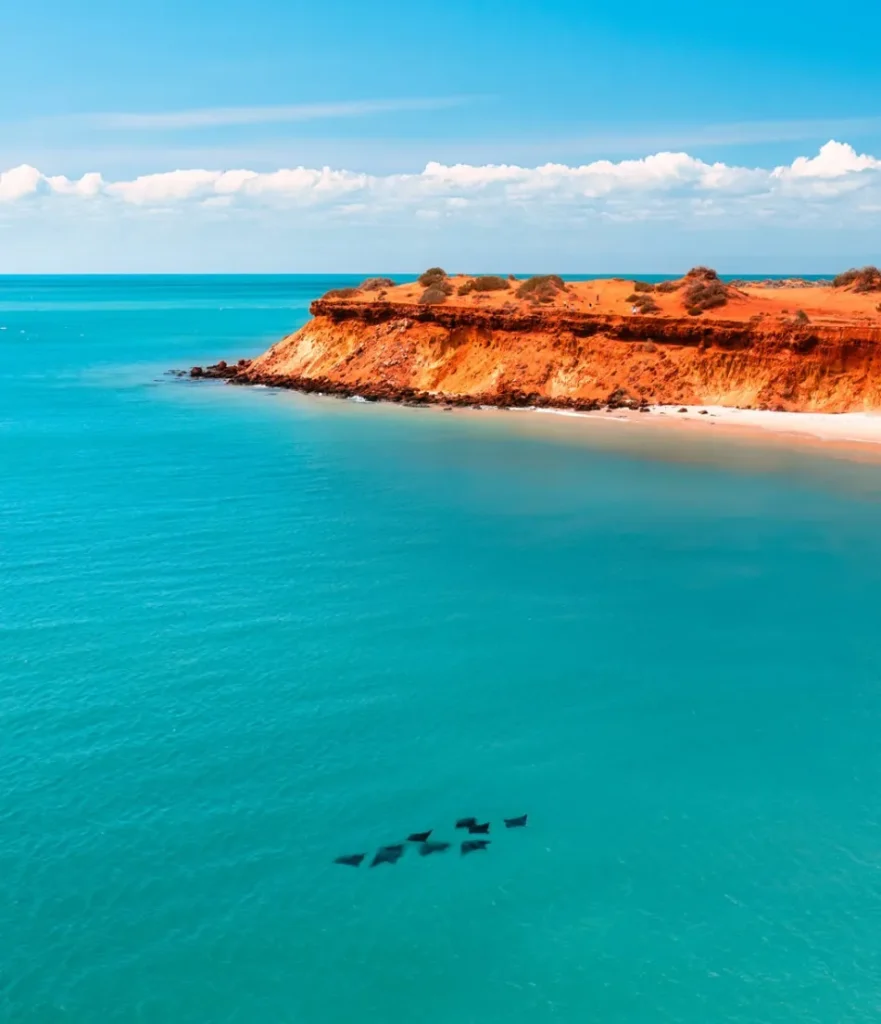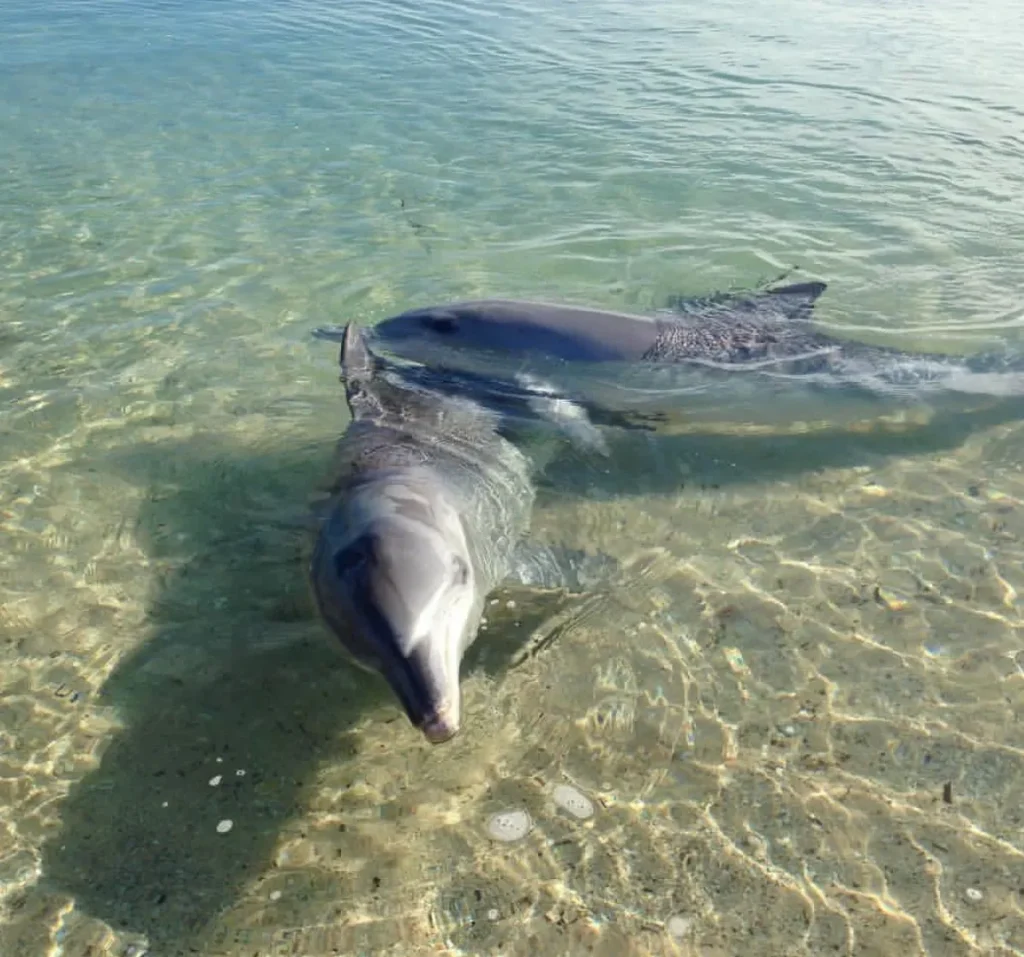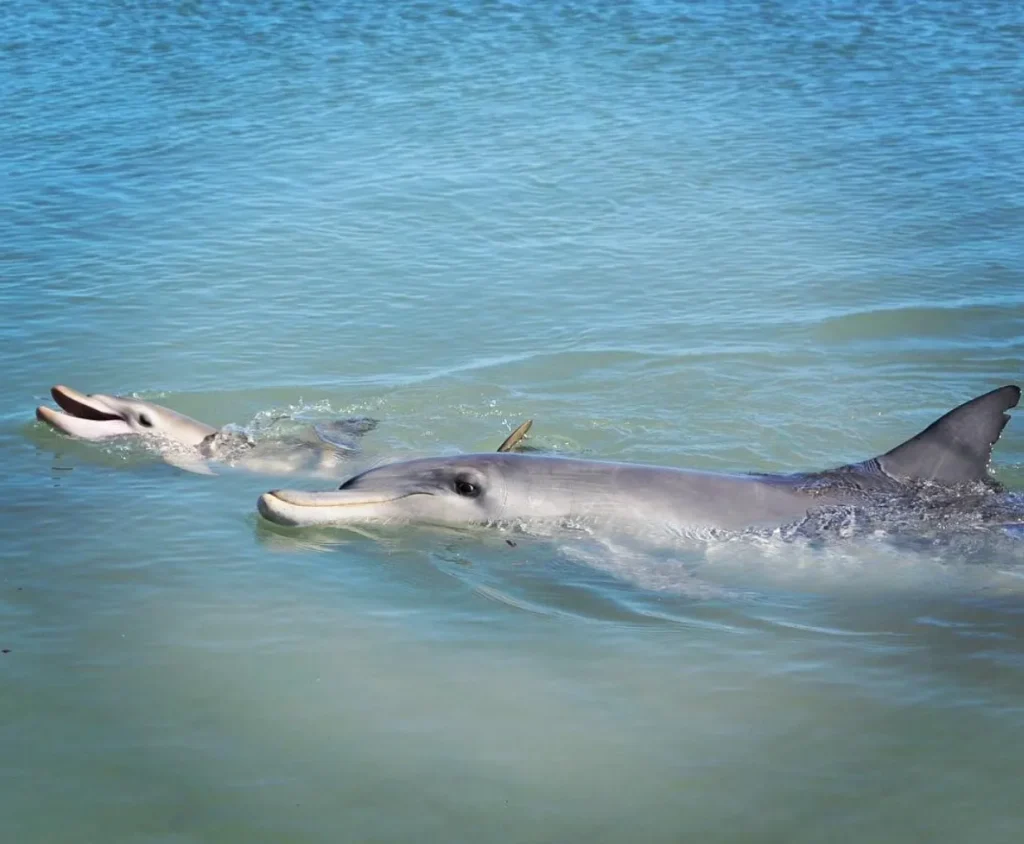Monkey Mia: An Eco-Friendly Destination in Western Australia

Monkey Mia, situated in Shark Bay World Heritage Area in Western Australia, is an amazing eco-tourist destination famous not just for its beautiful beaches and people but for its conservation efforts too. This picturesque place is located down the coral coast and can be reached by a short flight from Shark Bay Airport and gives visitors the chance to absorb the natural beauty of Australia with the least pollution possible. In this article, we focus on Monkey Mia attractions, marine and wildlife activities, and the protection steps taken to preserve this wonderful place.
The Natural Beauty of Monkey Mia
Appreciation of the natural resources of Monkey Mia is also revealed by reasons why it is impressive. Lots of pictures shown include white sandy beaches and sparkling waters of Monkey Mia. The beautiful sky blue seas are covered with white beautiful shells and quite a lot of blue waters are spread, making it a paradise for mood and adventure. The purpose of the area does not only come with water bodies it also comes along with some natural shoreline vegetation with some fine white sandy beaches therefore this area is quite favorable for nature lovers as well as for those who want to be away from busy places.
The location of the bay within the Shark Bay World Heritage Area means that the visitors are treated to a sea/land-long coastline. This varied environment is also home to the dugongs, manta rays and several other types of sea turtles, most of which are green and loggerhead turtles. The different areas that have been set aside for conservation of marine flora and fauna activities will in the long run continue to be a wildlife paradise while serving as picturesque areas for tourists.
Waters Teeming with Marine Life

It is well acknowledged that the waters of Monkey Mia are teeming with the different species of underwater flora and fauna and this is largely due to the impressive seagrass fields. As far as marine life goes in the bay, there is a good number of coral reefs with their inhabitants, notably bottlenecked dolphins, which catch the fancy of many tourist’s. The dolphins usually known as common bottlenose dolphins interact with people for both fun and educational purpose.
Dolphin experiences are usually organized so that people can interact and observe wild bottlenose dolphins while ensuring the least possible nuisance to the creatures. The Dolphins of Monkey Mia Research Foundation is directly involved in the study of behaviour patterns of the dolphins including their society and language. This makes it possible for people to play with the gentle dolphins and not do so in odious ways that irritate the dolphins.
Get to Know Monkey Mia’s History

It’s hard not to see how the history of Monkey Mia is expansive and inclusive of Aboriginal culture as well as some history of European exploration. The area has also been an important place for Aboriginal West Australians who have a strong connection to both land and sea. The enduring presence of Aboriginal language and history of culture archives a great deal of the history that concerns the means of living and the land that the Indigenous people occupied.
The European history of Monkey Mia began with the first voyagers who reached the Australian lands and its coasts. Monuments and areas linked to the European landings, including the Cape Inscription fall into this category of historical architecture. As well as the geological characteristics of the region, these historical features assist in constructing the history of Monkey Mia.
Location
Monkey Mia is located on the eastern shores of Shark Bay in Western Australia. This region is famous for beautiful scenery and variety in animals. This place can be reached by different means of transportation including four-wheel drive cars to those who are adventurous. Those heading to Monkey Mia from Perth Airport can go by road or take domestic flights to Shark Bay Airport and drive from there.
Wild Dolphins at Monkey Mia
One of the main attractions of Monkey Mia are its wild dolphins, in particular, the lovely Indo pacific bottlenose dolphins that have claimed this beach as their residency. These dolphins are always in a playful mood and are seen around the people. The morning dolphin feeds represent a remarkable chance of being close to these animals’, however, under the control of professional dolphin caregivers who watch over the volunteers, which are trained specifically for this purpose.
These dwarf minke whale feeding activity procedures are put in place to even protect the feeding whales. Feeding times are carefully scheduled in such a way as not to interfere with the whales social life patterns. These encounters are for the visitors an educational high point, and at the same time, they are useful in the preservation of the environmental conditions for the dolphins and for the dolphins themselves.
The Bottlenose Dolphins Phenomenon

Among all of the attractions found at Monkey Mia, the bottlenose dolphins are the most standout and very much sociable. Without these dolphins, the area would have been so boring and many people go there to interact with dolphins. It is always a great pleasure to see such very elusive dolphins such as the bottlenose dolphins interact with humans and such is possible only with the determination and restriction of the level of dominance over dolphin communication and behavior.
Dolphin behavioral research, which includes social and communicative aspects, is also carried out by The Dolphins of Monkey Mia Research Foundation. The acquired knowledge is necessary for proper and trustworthy interactions between humans and pristine species, which in this case is the dolphin involved.
Dolphin Feeding Experiences
One of the key events of the trip at Monkey Mia is coming for the dolphin feeding experiences. These are events when guests are quite pleased to watch the attentiveness of the dolphins, learn how they behave and their social structures. During the feeding sessions, which are appropriately timed to prevent overfeeding and the dolphins losing their instinct to hunt, guests are treated to close interactions with the dolphins as they seek and play with food that has been given to them.
The activity is made interesting and educative for the trainees. The trained personnel explain how dolphins behave and why they should be preserved. Feeding the dolphins is one of the activities encouraging the sustainable development of eco tourism at monkey Mia, so that in as much as the tourists enjoy the visit, the natural environment is not damaged.
Protecting the Dolphins

The protection of the dolphins at monkey mia is of great concern to the Parks and Wildlife Service and their partner the Dolphins of Monkey Mia Research Foundation. Measures are already in place so that the contact which the dolphins have with humans does not have adverse health effects or disrupt their natural way of life. This includes health monitoring of dolphins, controlling the frequency of feeding as well as informing the tourists about the manners in which one should behave near animals.
The emphasis on the minimal interventions helps to protect the dangerously precarious symbiotic relation that exist between humans and nature. In efforts to shield its mammals and educate the world on embracing conservation, monkey mia is committed to employing master strategies aimed at foster development without compromising the unique experience of this eco-friendly site for both present and future generations.
Conservation Efforts
Conservation at Monkey Mia is done in more than one approach. One is for protection of the environment and the other concerns wildlife protection. Since the area is also a marine park it still means that strict measures have also been instituted for the conservation of the sensitive ecosystems and wildlife. Such initiatives include the restoration of degrading habitats, fventional January 2023 marine species monitoring program, and ditecte marketing of mussel farming and responsible tourism.
There are also campaigns focused on reducing changes made by people into the surrounding such as awareness campaigns, waste management and advertising of green activities. All these activities are aimed at conserving the vegetation and other natural features in monkey Mia and at the same time enhancing the healthy condition of the area’s marine and land ecosystems.
Eco-Friendly Activities in Monkey Mia
The activities at Monkey Mia include eco tourism in order for visitors to appreciate the natural surroundings with less harm. Guided wildlife cruises, ecological cruises, snorkeling tours that allow one to experience the marine life yet do not bring any adversely affect the ecotourism ecology are some of the activities provided. Tourists are also encouraged in doing environmental clean-up activities like cleaning of the beach and there are some ecological programs employed.
The activities are apart from other features such as accommodation which comprise of caravan sites, unpowered sites and green eco lodges located in the RAC Monkey Mia Dolphin Resort. These lodges are well constructed in such a way that they do not alter the natural setting in which they are situated, yet comfort is maintained.
Other Attractions in the Area

Apart from its dolphin experiences, Monkey Mia has other attractions within its vicinity that complement the eco tourism activities. Hamelin Pool with ancient stromatolites and the beauty of Francois Peron National Park are some of the nearby places available for more fun. The Batavia Coast Marina also appears popular and offers activities such as boat trips and mini golf.
Other attractions including Eagle Bluff which is great for views of the coastline and Ocean Park Aquarium which focuses on marine life. These attractions go hand in hand with the visitors to Monkey Mia and the unique offerings of the place making a great mix.
Conclusion
Considered as the best or second best eco tourist location on the western coastline of Australia, Monkey Mia presents its visitors with a combination of beauty, animals, and conservation efforts. Imagine your stay at Monkey Mia surrounded by sea beaches, clear blue water, and playful dolphins while on a green Monkey Mia trip. Visitors do not have to miss out on anything that this exotic locale has to offer, thanks to the very responsible attitude towards environment and conservation which can be easily practiced.
FAQ
When is the best time to feed dolphins in Monkey Mia?
Dolphin feeding encounters at Monkey Mia usually occur in the morning and feedings are scheduled at times that will cause least disturbance to the dolphins. It is best to go as early as possible in the day, especially if you want to join in those feeding experiences.
How can I get to Monkey Mia from Perth?
From Perth Airport, you can travel by car to Monkey Mia or fly domestically to Shark Bay Airport. The drive from perth to Monkey mia is scenic and normally takes about 8 to 10 hours, alternatively, it is also possible to take a shorter flight and then be transfered to Monkey mia.
Will it be possible to find eco accommodation in Monkey Mia?
Certainly, there are various options for eco accommodation in Monkey Mia, which includes the RAC Monkey Mia Dolphin Resort that offers caravan sites, unpowered sites and green eco lodges as well. These types of accommodation are made in such a way that they lessen the negative impact on the environment and in most cases, blend in with the surroundings.
What protections are there for dolphins at Monkey Mia?
Some of the conservation activities in Monkey Mia cover monitoring the dolphins health, limiting feeding times and also informing the tourists on the importance of responsible animal behavior. The Parks and Wildlife Service and the Dolphins of Monkey Mia Research Foundation coordinate and make sure that the dolphins are safe and that their healthy ecosystem is protected.
What other places can you visit when you’re near Monkey Mia?
Hamelin Pool with ancient stromatolites, Francois Peron National Park and the Batavia Coast Marina are only some of the sights located within an hour or two from Monkey Mia. There are also various tours, boat, eco cruise tours and sight seeing including Eagle Bluff, Ocean Park Aquarium and others.